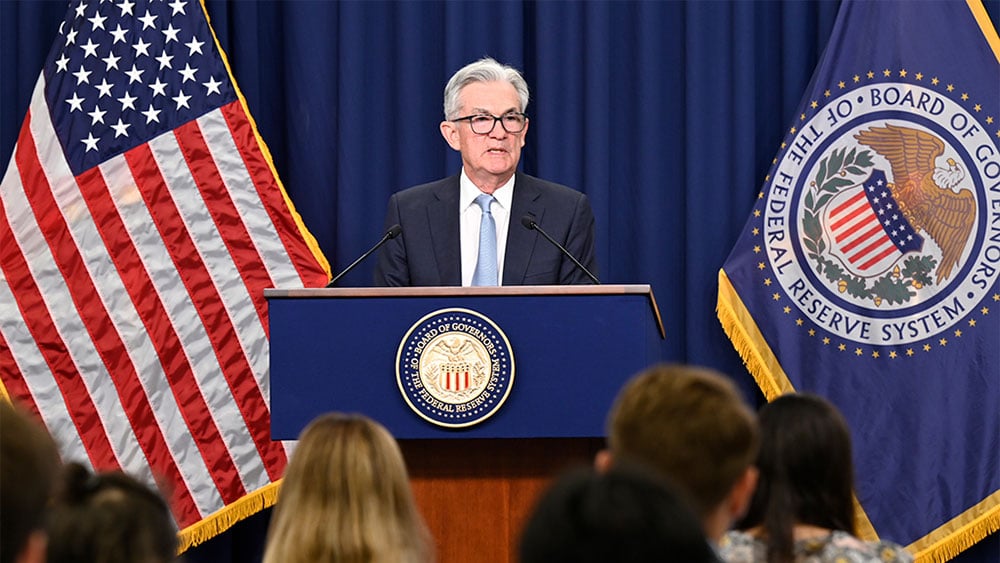A 75-basis-point rate hike from the Fed came in on Wednesday after September’s inflation of 8.2%. The lingering question is: Will Fed Chair Jerome Powell begin tapering off the interest rate hike cycle in December?
X
The economy added 263,000 jobs in September as the unemployment rate slipped back to July’s level of 3.5%. GDP reversed after contracting in the first two quarters to an annualized 2.6%. Consumer spending increased 0.6% in September, bucking inflationary pressures. The strong data coaxed the Fed to hold fast to its pace to raise interest rates. However, business activity showed a fourth month of slowing and raised hopes of a December pivot in the Fed’s strategy.
But a slowdown for the rate hike may depend on another and crucial factor.
The Fed has the goal of ensuring maximum employment. That goal also aims to avoid price volatility as inflation levels cool. In March, as inflation started to make itself felt, the Fed committed to front-loading interest rate hikes with a terminal rate of 4.75%-5% at the end of 2023. That terminal rate will now be higher.
The 25-basis-point hike that started the current interest rate cycle marked the peak of the era of easy money.
But a tight money supply does not depend just on a higher interest rate. It requires the Fed rate to be higher than inflation. Unless that happens, the real interest rate — which is the difference between the fed rate and the Consumer Price Index — is actually negative.
In other words, money supply gets tight only when the real interest rate is positive. In fact, since 2019, the real interest rate has been negative. That has not changed despite the six times the Fed has cranked its target rate higher this year.
Real Interest Rate Is Still Negative
The 75-basis-point hike on Wednesday lifts the Fed fund rate to 3.75 %-4%. Another 50-basis-point increase in December will end the year at 4.25%-4.5%. A 75-basis-point lift in December would lift the target rate to 4.5%-4.75%.
Core inflation in September, which excludes the more volatile food and energy prices, was 6.6%. That alone was higher than the Fed rate for the month, which was just 3%-3.25%.
So what can we expect in 2023?
Inflation is cooling and would have to fall to 5% for the real interest rate to be zero, assuming that the terminal Fed rate is indeed 5%. But that is still not going to result in a tight money supply. Either the Fed rate has to climb higher than 5% to bring real interest rates to positive territory or inflation has to fall below 5%, in order to be below the Fed rate. The crossover is key to see positive real interest rates that will increase the cost of borrowing. Between 2004 and 2006, the Fed raised rates from 1.25% to 5.25% before PCE came down to the 2% target.
Room Left For Hikes: Does Not Mean Recession Yet
So the question is how far will the Fed go this time?
There is still some room left for the current rate increase cycle, going by the real interest rate numbers. However, the good news is that this in itself need not trigger a recession.
Earlier, in 1980 when inflation spiked to 14%, the Fed rate of 20% did trigger a recession.
But the connection is not as clear in the 2007 situation. It is true that the Fed fund rate hit 5.25% just before the great recession of 2008. But the recession was triggered by the subprime mortgage crisis. Unlike 1980, a tighter monetary supply fueled rather than caused the recession then.
So even a terminal rate of 5% or even higher does not necessarily mean that the economy will land in recession in 2023. That means a soft landing is not ruled out if the pivot comes later rather than sooner.
YOU MAY ALSO LIKE:
Top Growth Stocks To Buy And Watch
Learn How To Time The Market With IBD’s ETF Market Strategy
Find The Best Long-Term Investments With IBD Long-Term Leaders
MarketSmith: Research, Charts, Data And Coaching All In One Place
How To Research Growth Stocks: Why This IBD Tool Simplifies The Search For Top Stocks
Image and article originally from www.investors.com. Read the original article here.

